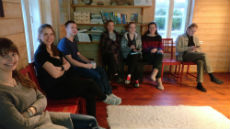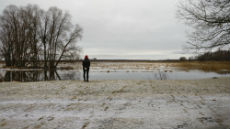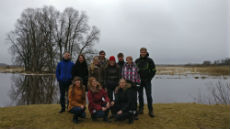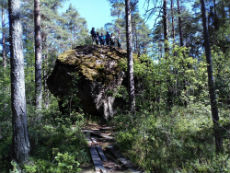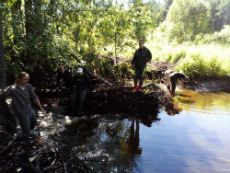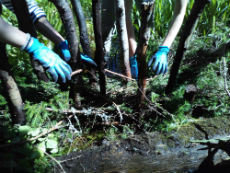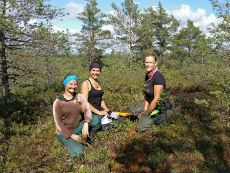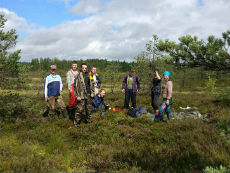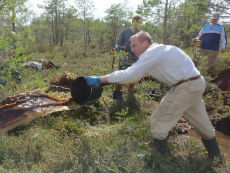Deprecated: Methods with the same name as their class will not be constructors in a future version of PHP; plgContentJw_allvideos has a deprecated constructor in /home/html/yeenet.eu/public_html/www/archives/plugins/content/jw_allvideos/jw_allvideos.php on line 18
Deprecated: implode(): Passing glue string after array is deprecated. Swap the parameters in /home/html/yeenet.eu/public_html/www/archives/plugins/content/jw_allvideos/jw_allvideos.php on line 72
Estonian Fund for Nature - local actions |
|
Meeting with volunteers Dates: 3-4 March 2017 Place: Palupõhja, Estonia What was done: Group meeting to plan activities in summer. What is the result of activity: With this two day meeting we focused on developing the plan on how to solve the problems in our project site - last Freshwater pearl mussel habitat in Estonia. We also discussed the publicity of the project - how to increase the interest among people, agencies and policy makers. During the meeting there were also three presentations - Kristjan Oopkaup from the University of Tartu talked about micropollutants in the water and how they affect river habitat. Dr. Kristjan Piirimäe from ELF gave an overview about agricultural diffuse pollution how it can be reduced. And finally Girts Baranovskis from Balta Daba talked about Latvian activities. Why this method: Our plan was to have an intensive two-day meeting to get to know each other and to plan forthcoming activities. To get more input, two experts were included to give presentations about different perspectives how to deal with water pollution. What follow-up is planned: Regular Skype meetings before intensive fieldworks in July.
Restoring freshwater pearl mussel habitat Dates: 6 - 9 July 2017 Place: Lahemaa national park, Estonia What was done:
What is the result of activity: We found more than 40 flow barriers in the river. We found kilometres of salmon spawning grounds. We saw more than 50 freshwater pearl mussels. We removed two beaver dams and several flow barriers. Sediment trap was built into the drainage ditch. Why this method: Freshwater pearl mussels (especially juvenile) are extremely vulnerable to the changes of river morphology and physical-chemical parameters. Sediments, which will eventually pile up in the river due to the nearby agricultural activities and forest drainage, will affect their habitat. In addition, the salmons are extremely important for mussels' life cycle and therefore it is also important to remove all the flow barriers and beaver dams for salmon to have good access to their breeding areas. Beaver damns also reduce the flow rate and increase the water table in the river, which result in lower oxygen concentration and higher water temperature. Low oxygen and high water temperature is not suitable for both salmons and mussels. Therefore it is crucial to remove all flow barriers and especially beaver dams. What follow-up is planned: Collected data will be presented to the Estonian Environmental Board. Consultation with some experts is planned to plan further activities.
Restoring drained bog Dates: 3 - 6 August 2017 Place: Soosaare bog, Põltsamaa parish, Estonia What was done:
What is the result of this activity: During the Soviet period, in Estonia a lot of bogs were drained to increase agricultural land and to mine peat. These highly vulnerable heterogeneous ecosystems were totally changed into homogeneous landscapes, which started to emit huge amount of carbon into the atmosphere due to the peat mineralization. In recent years, many previously drained bogs, which have not been used for forestry, agriculture etc. were restored. If drained peat lands are restored they start to sequester carbon and will help to fight against climate warming. Why this method: Closing drainage ditches in the bog using peat, which was cut from the same bog is one of the most sustainable and effectives ways to stop water flowing away from the bog. This method will increase water level in the bog and therefore we helping Sphagnum mosses to grow and increase soil organic content. What follow-up is planned: Evaluation of the effectiveness of the damns. If some dams are damaged they will be rebuilt.
Funder:
Estonian Fund for Nature - Environmental challenges Main page of the projectRestoring drained bog |



